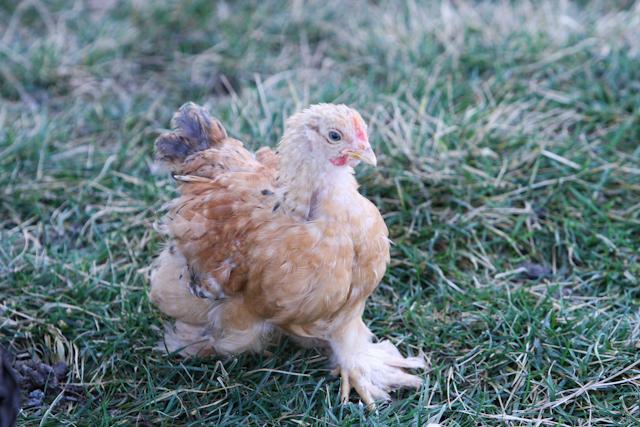Quote:
I pay some attention to the purpose for using double mating with my Partridge. for instance, a Partridge male with red ticking in the breast makes a good pullet breeder. Conversely, better males would be produced using a correctly colored male and a female that wasn't as distinct in penciling. With the Partridge bantams I have issues with shafting so I try not to use any birds for breeding that show that. The trouble is that as they get older they tend to molt in with shafting in the primaries. Not that this has much to do with double mating, but a flaw I am dealing with in the Partridge Btms. It's possible to produce good males and females from the same pen, but you'll have greater success as far as numbers if you were to use double mating practices. Same holds true with the GL's. Smutty cushioned females bred to a well laced male would produce better males than females. To produce the best laced pullets, you want as good a female as possible in lacing, and focus on wing cover lacing and lacing quality in the thighs of the males. If they carry the lacing through the thighs, they should produce decent lacing in the pullets. not much I can write that hasn't already been written. Right now I focused more on getting a deeper mahogany color on both the bantam and large Partridge.
Thank you! That will help a lot of us!!
I pay some attention to the purpose for using double mating with my Partridge. for instance, a Partridge male with red ticking in the breast makes a good pullet breeder. Conversely, better males would be produced using a correctly colored male and a female that wasn't as distinct in penciling. With the Partridge bantams I have issues with shafting so I try not to use any birds for breeding that show that. The trouble is that as they get older they tend to molt in with shafting in the primaries. Not that this has much to do with double mating, but a flaw I am dealing with in the Partridge Btms. It's possible to produce good males and females from the same pen, but you'll have greater success as far as numbers if you were to use double mating practices. Same holds true with the GL's. Smutty cushioned females bred to a well laced male would produce better males than females. To produce the best laced pullets, you want as good a female as possible in lacing, and focus on wing cover lacing and lacing quality in the thighs of the males. If they carry the lacing through the thighs, they should produce decent lacing in the pullets. not much I can write that hasn't already been written. Right now I focused more on getting a deeper mahogany color on both the bantam and large Partridge.
Thank you! That will help a lot of us!!







 llb
llb


